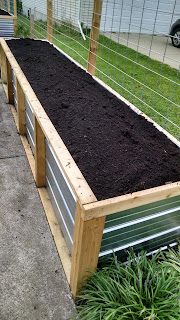 What great weather we’ve had for Beggar’s Night where all the little ghosts and goblins, (or princesses, firefighters and spacemen) run from door to door Trick or Treat!-ing for candy goodies. Greeted by smiling or growling Jack O’Lanterns, the costumed neighborhood kids are on the hunt for Peanut Butter Cups and Snickers Bars.
What great weather we’ve had for Beggar’s Night where all the little ghosts and goblins, (or princesses, firefighters and spacemen) run from door to door Trick or Treat!-ing for candy goodies. Greeted by smiling or growling Jack O’Lanterns, the costumed neighborhood kids are on the hunt for Peanut Butter Cups and Snickers Bars.
Actually as far as candy goes, these are actually some of the healthier choices. The endorphin rush from the sugar and chocolate makes the little ones (and sometimes their grown-up guardians) feel happy, and the protein from the peanuts and peanut butter* will help you feel fuller sooner and cushion the sugar crash that would come from plain chocolate, sweet tarts or candy corn alone.
*Apologies to those with peanut allergies
How about a Snick-a-Loaf?
Make Better Choices
When you are a Beggar there usually isn’t much choice, but more healthy options for treats include caramel apples or caramel popcorn (like Cracker Jacks), which are high in fiber and other good stuff, to go with their calories and sugar.
Don’t Worry So Much
It actually takes quite a few pieces of candy (~30-50) to equate a pound of fat (3500 calories).
Be Mindful
Savor the enjoyment that eating treats bring. Avoid just chewing once or twice and swallowing. A New Zealand study of 300 people found that people who associate eating chocolate cake with guilt were less successful in maintaining their weight compared with those who viewed it as a celebration.
Recover when you’ve eaten too much junk.
Donate your leftovers to avoid having the temptation day after day. Go back to eating normally with healthy choices as soon as possible. Foods high in fiber will help to feed healthy gut bacteria, they’ve just had a sugar binge too. Eat plenty of leafy greens, berries and other foods high in antioxidants and other phytochemicals to fight free radicals and prevent inflammation associated with too much sugar. Drink plenty of water to keep your systems hydrated as it processes all that sugar and flushes out waste and toxins. Dehydration can also lead to fatigue and sluggishness that adds to those feelings in your sugar crash.
Rest up so you can better adjust to the time change, even if we "gain" an hour, coming this weekend, and have a great week!









































